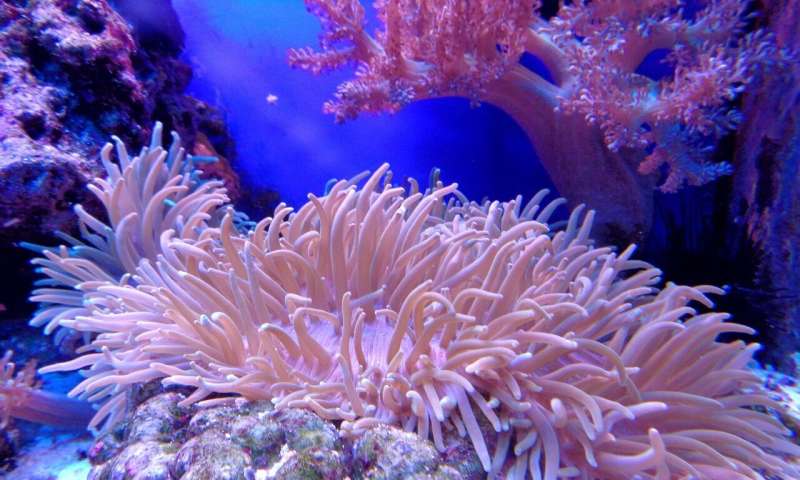Climate resilient microalgae could help restore coral reefs

Coral species exhibit different temperature tolerances. This is in part due to the composition of their microalgae symbionts. With a new method, researchers from Uppsala University were able to predict how individual microalgae might behave under future temperature stress and identify more tolerant coral symbionts. In combination with forthcoming single cell selection and growth experiments, the identification of climate resilient cells provides opportunity to help mitigate the effects of coral bleaching.
Coral reefs provide sustenance and income to an estimated half billion people, attract tourists, protect coastlines and are among the most biodiverse ecosystems on our planet. Despite their importance, more than half of the world's coral reefs are now under stress, primarily due to climate change and related human activities. Stressed corals "bleach" which describes the disruption of the symbiosis between corals and their photosynthetic partners, heavily pigmented microalgae that provide most of the energy to their coral host.
This causes the coral skeleton to appear white (hence bleached) and leaves the coral in a state of energy shortage until new—perhaps less temperature sensitive—symbiont cells are taken up from the environment. The temperature sensitivity of a coral thus depends in part on the temperature sensitivity of its symbionts, which has made the investigation of temperature tolerance among coral symbionts an intense research topic.
In a new study published in the ISME Journal, scientists investigated how different species of coral symbionts react to temperature stress. The difference in temperature tolerance between different coral symbiont species was already known, but there are very few studies of the difference between individual cells within the same species.
"These differences among cells allowed us to predict the temperature tolerance of a cell before the stress actually occurred," says Linhong Xiao, first author of the study. "For one, this might be handy for coral reef monitoring because it enables us to recognize more heat tolerant in a rapid, minimally-invasive assay. By providing the means to identify and select more temperature tolerant coral symbionts, the method also holds potential to accelerate ongoing coral reef restoration efforts by 'experimentally evolving' temperature tolerant coral symbionts which could, conceivably, be introduced back to coral host larvae in order to make corals more robust against climate change," says Xiao.
In contrast to previous studies, this study used a unique miniaturized approach consisting of a microscope and a credit card-sized 'microchip' that house many hundreds of individual coral symbiont cells to assess differences in temperature sensitivity among single cells.
Through this unique approach, the researchers were able to measure that individual cells within each species behave quite differently from their sister cells.
"We hope our new method can help to predict the thermal tolerance of corals in the field by extracting and measuring symbiont cells from live corals. While we still have a long way to go, our tools might help coral-reef monitoring and also increase the speed at which we can create stocks of climate resilient coral symbionts, a frontier research area," says Lars Behrendt, who headed the study.
More information: Linhong Xiao et al, Photophysiological response of Symbiodiniaceae single cells to temperature stress, The ISME Journal (2022). DOI: 10.1038/s41396-022-01243-6
Journal information: ISME Journal
Provided by Uppsala University





















